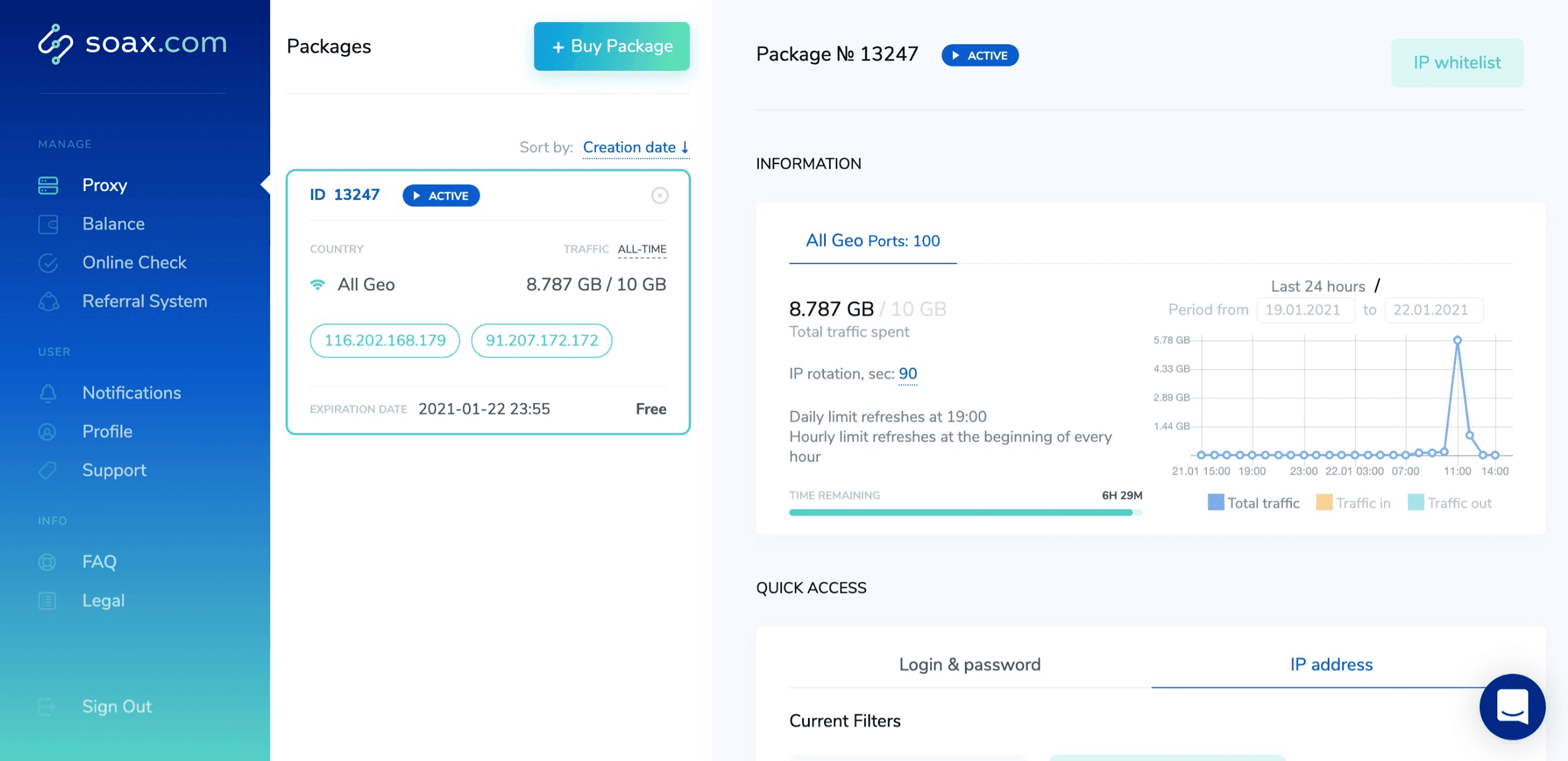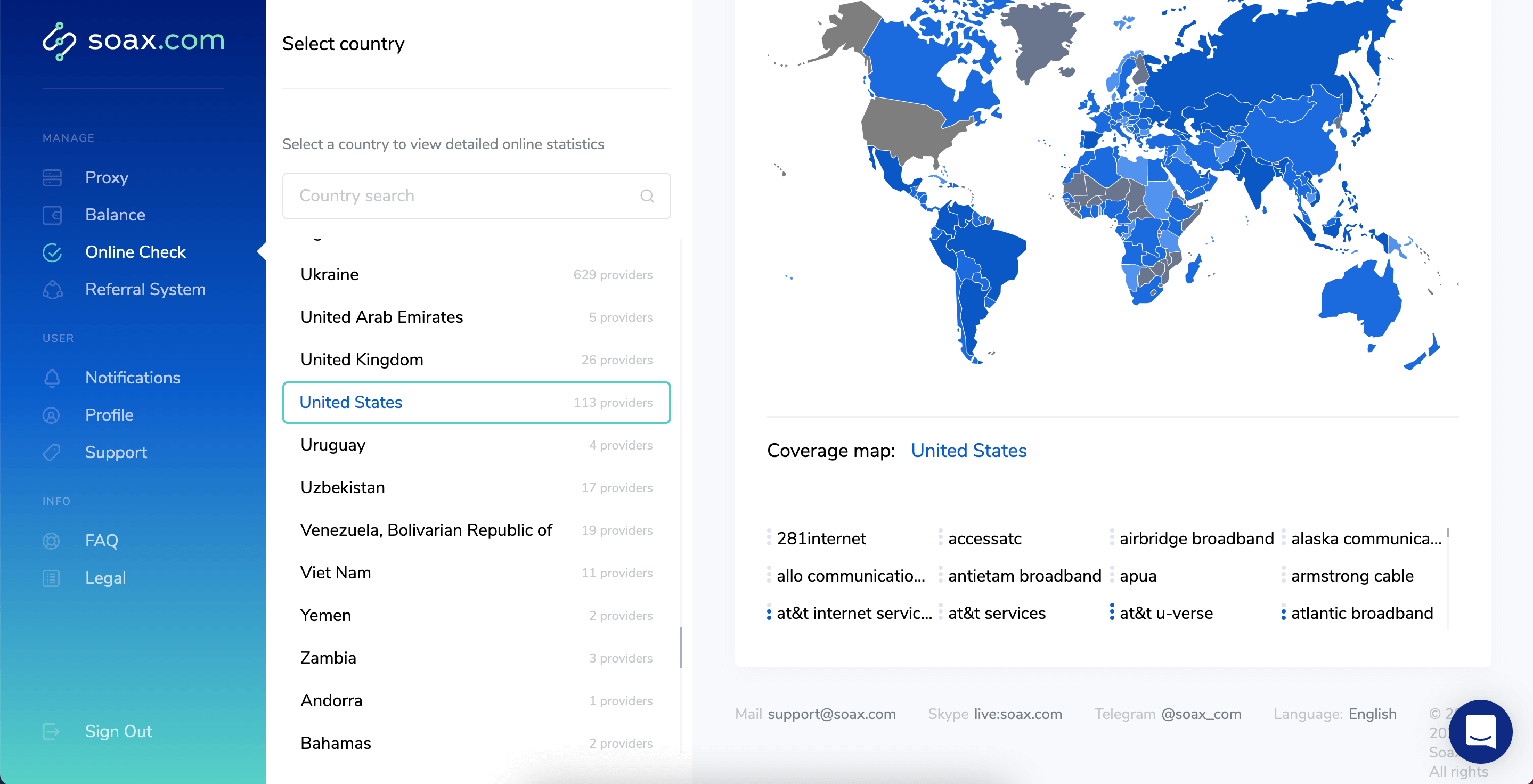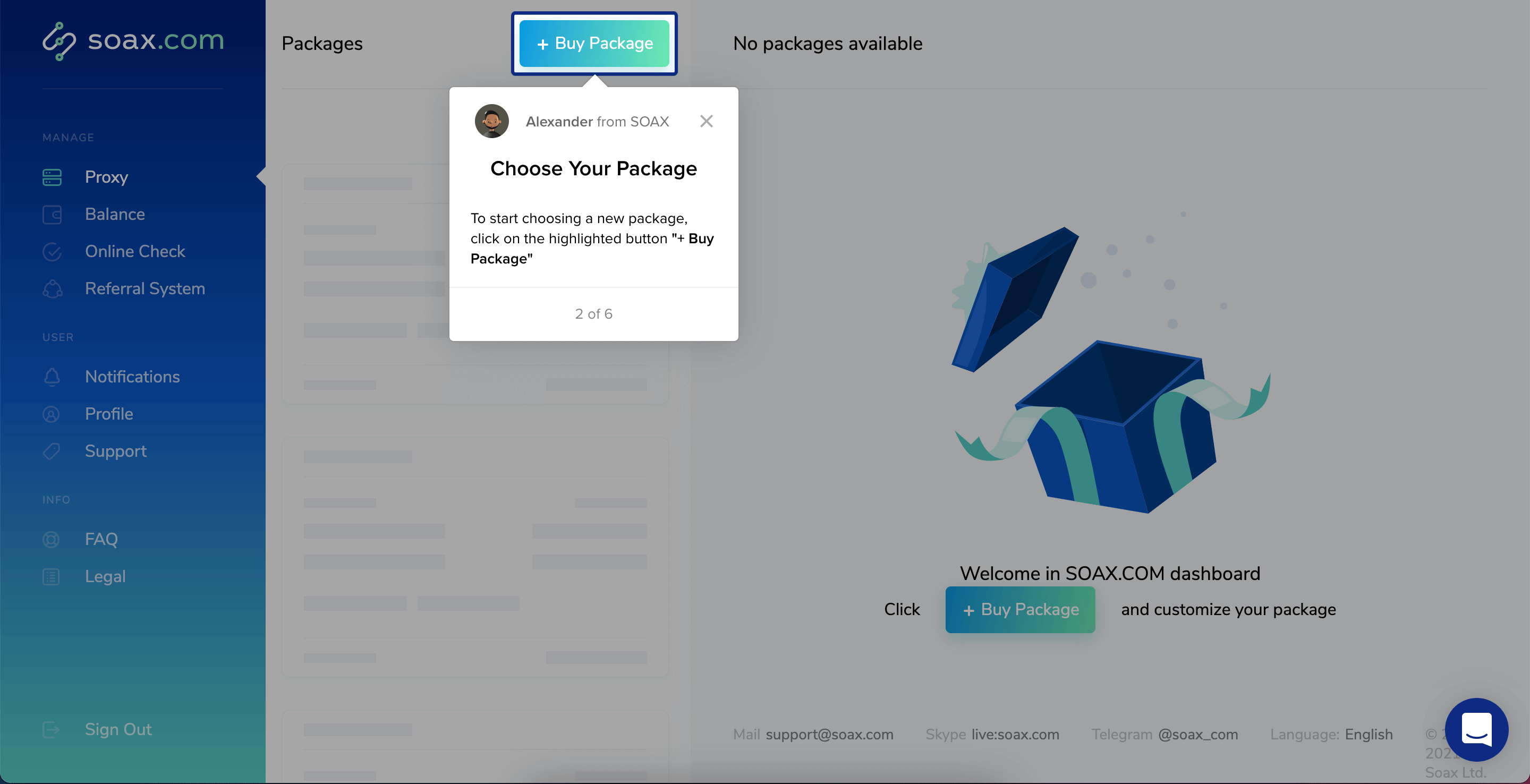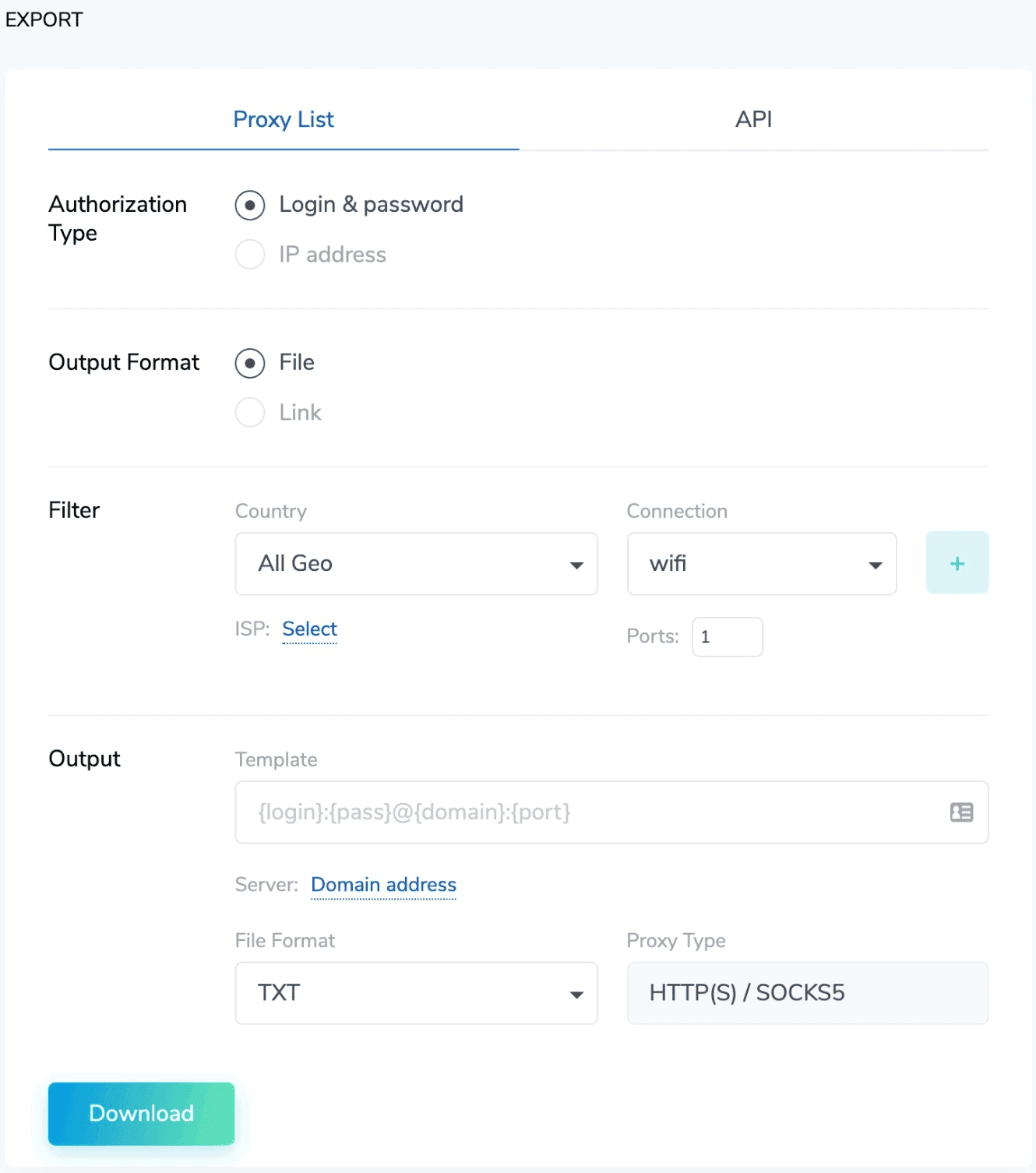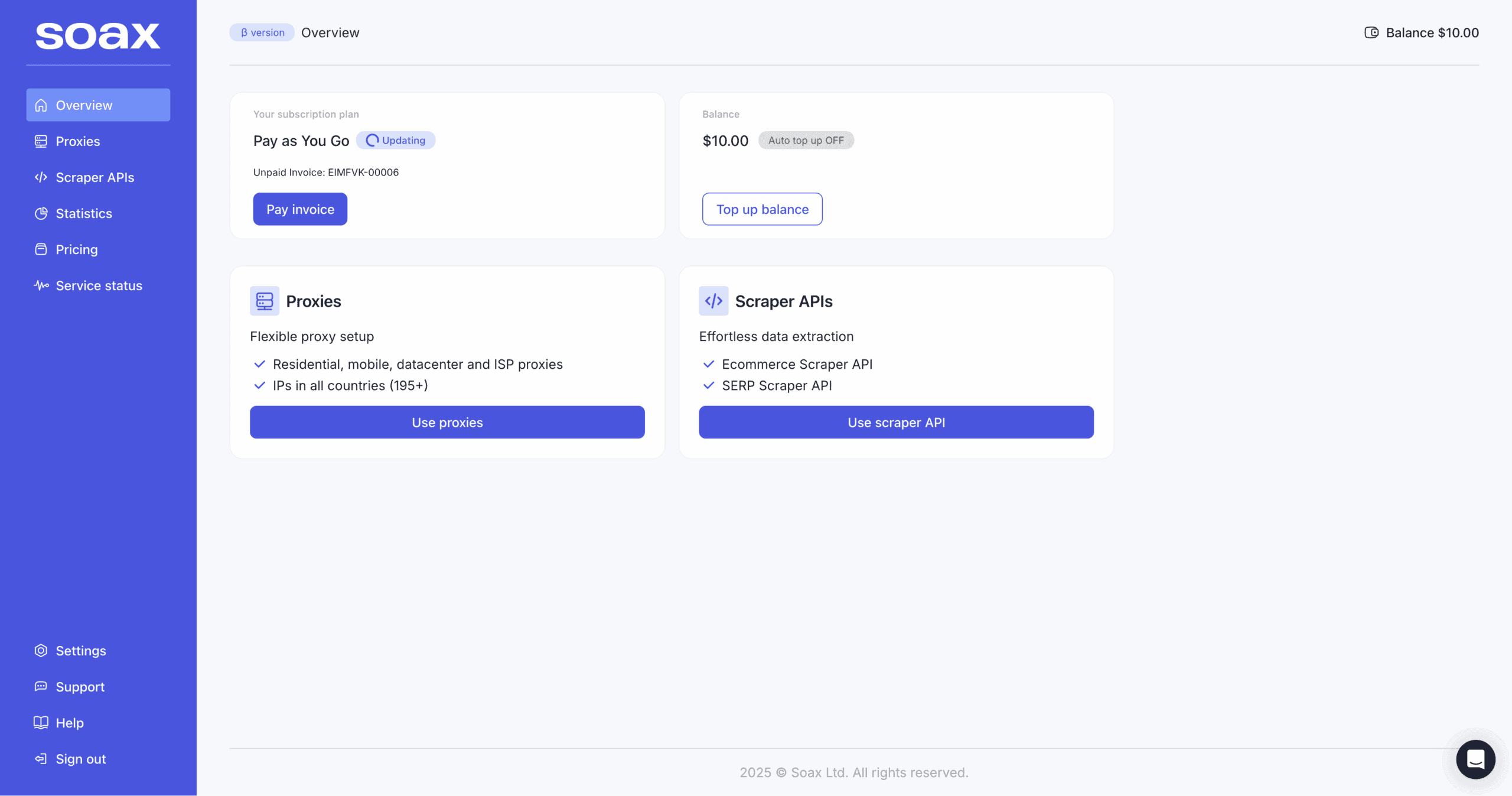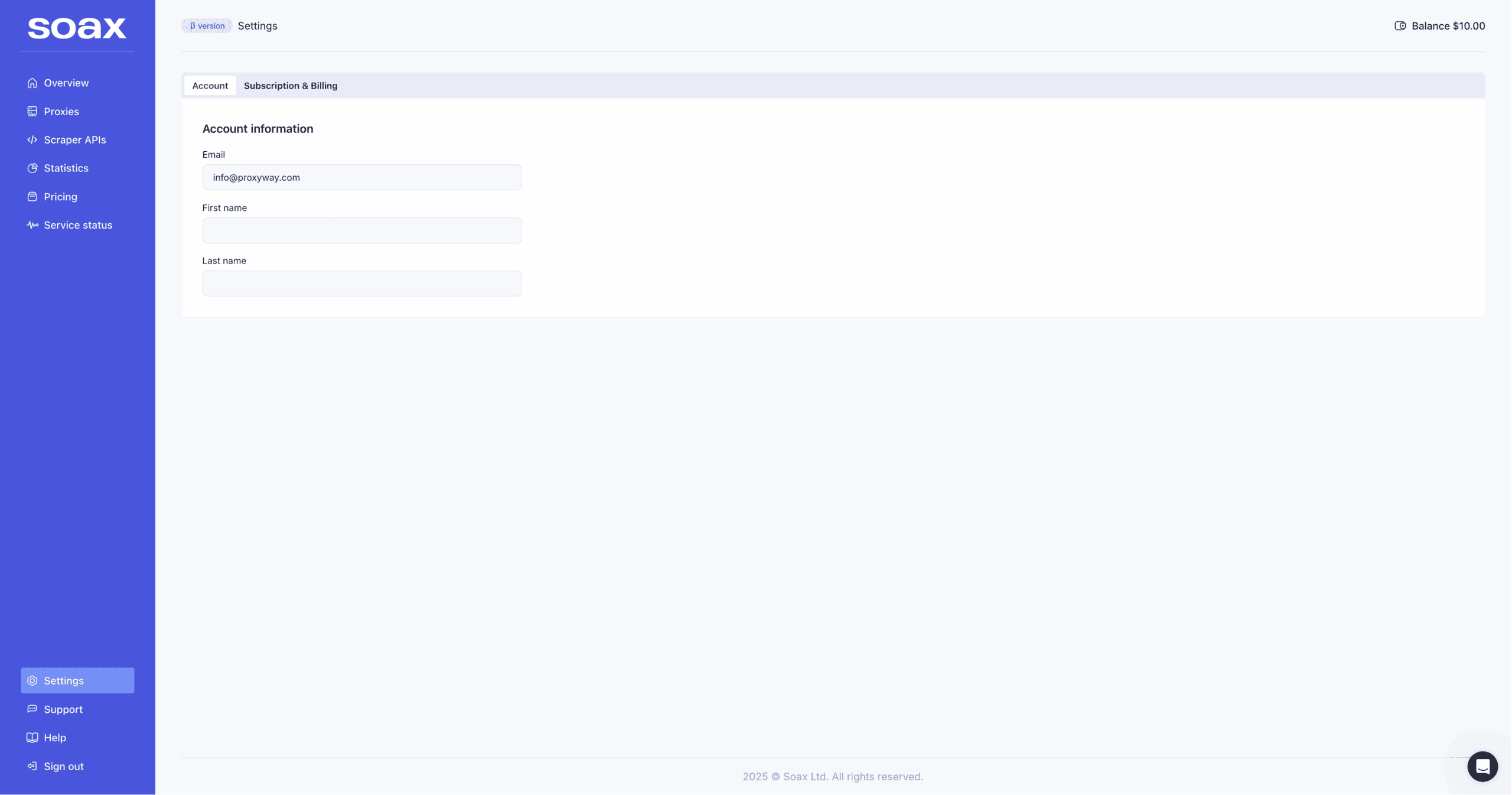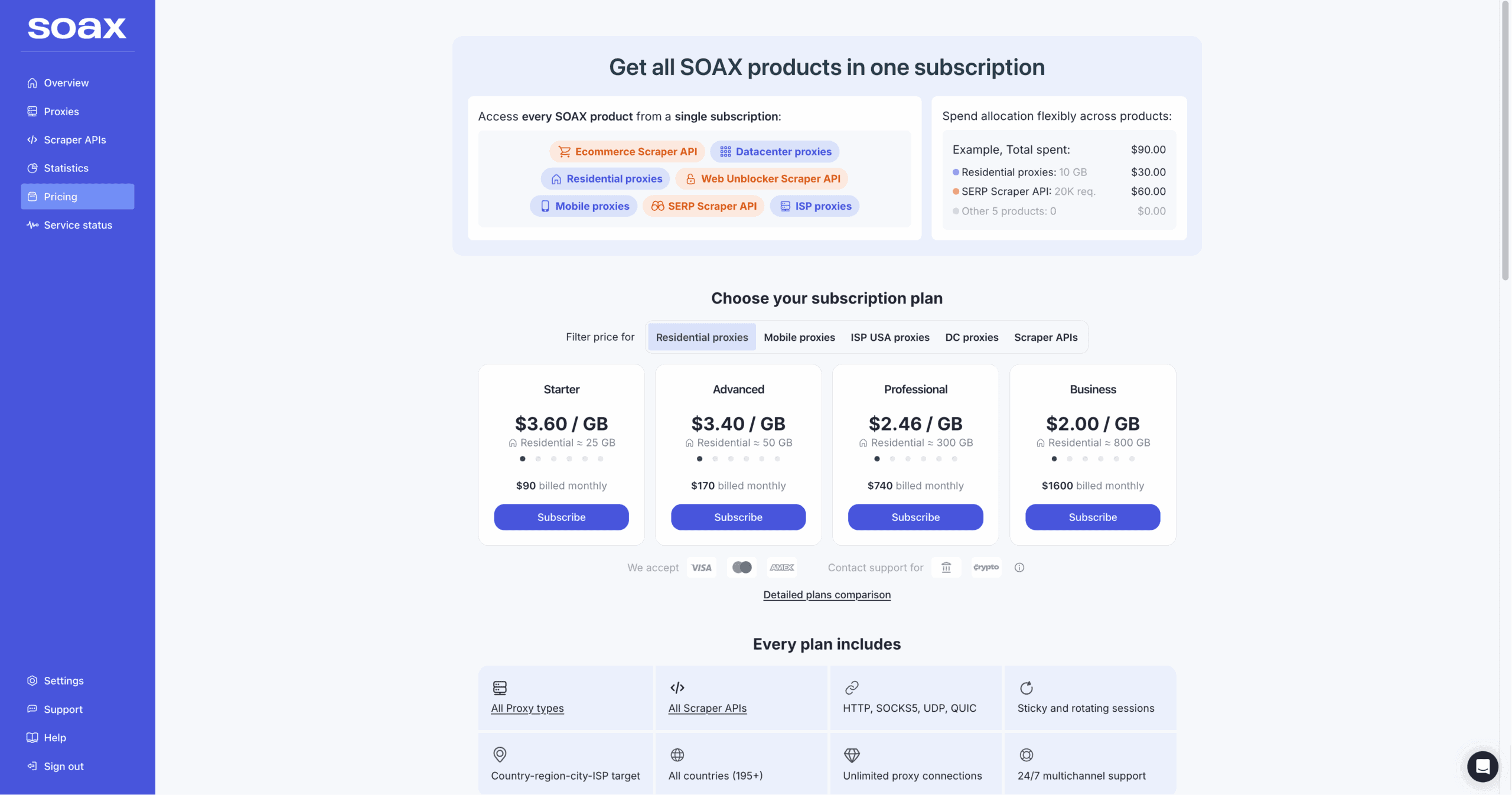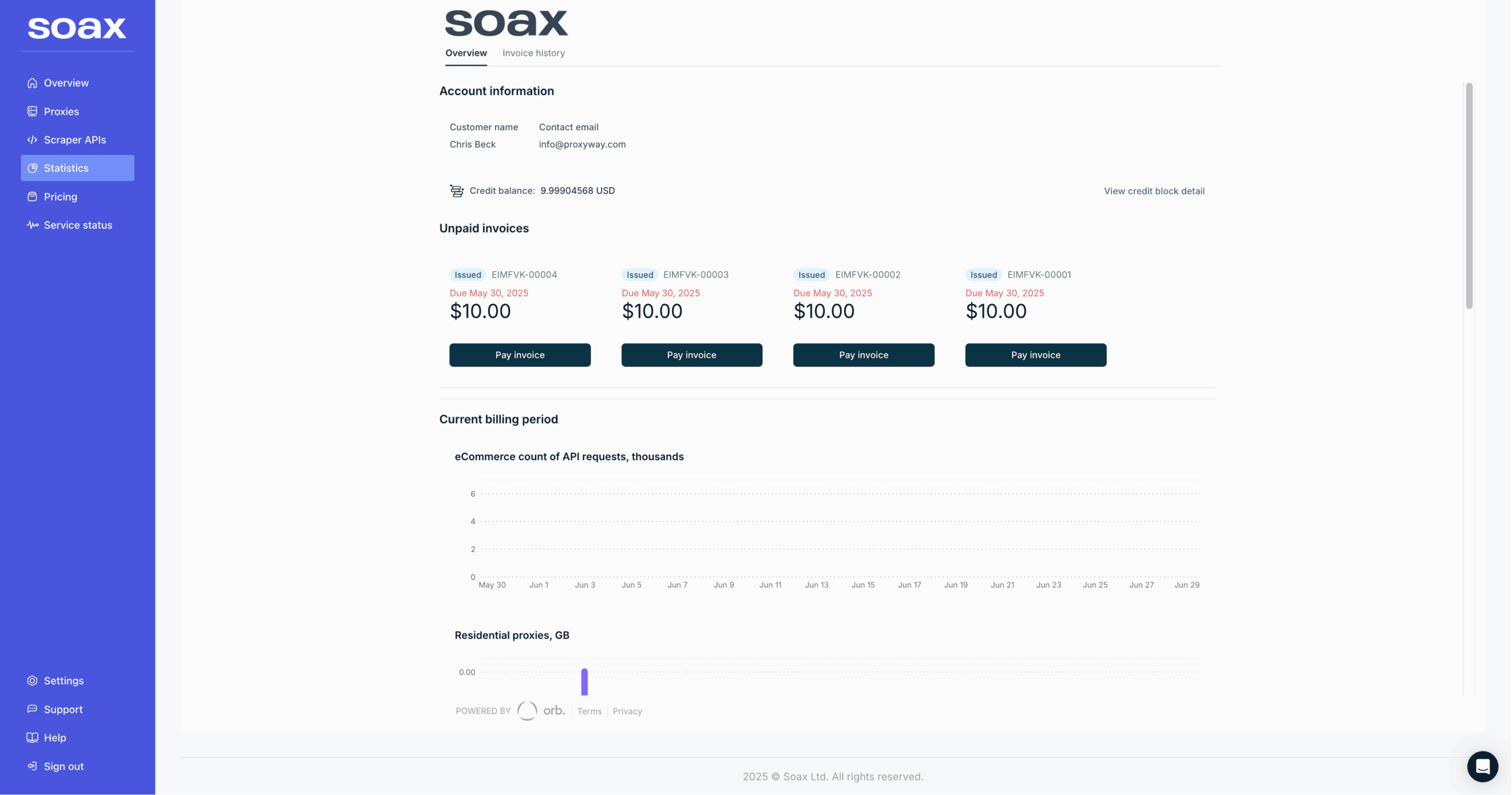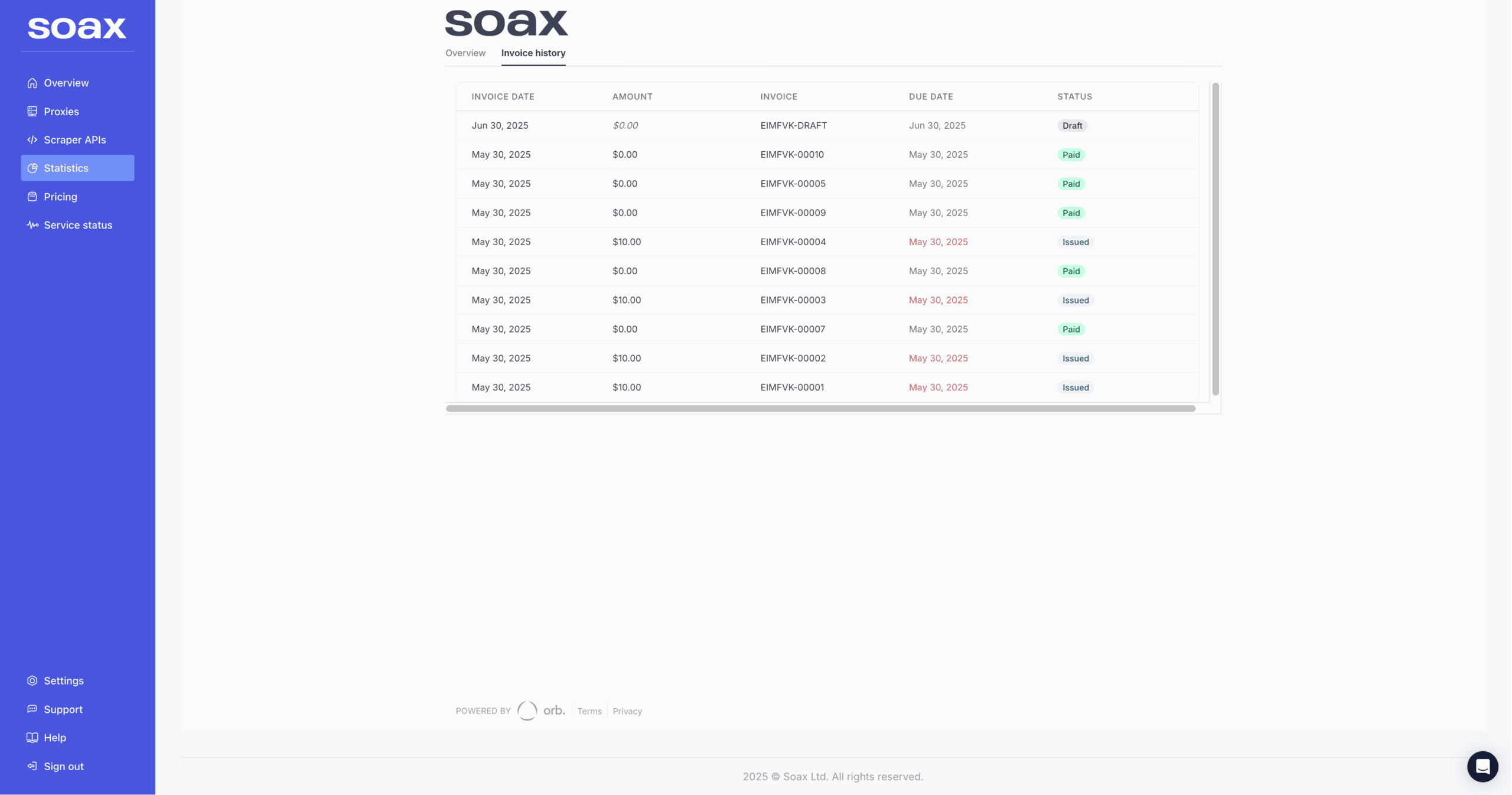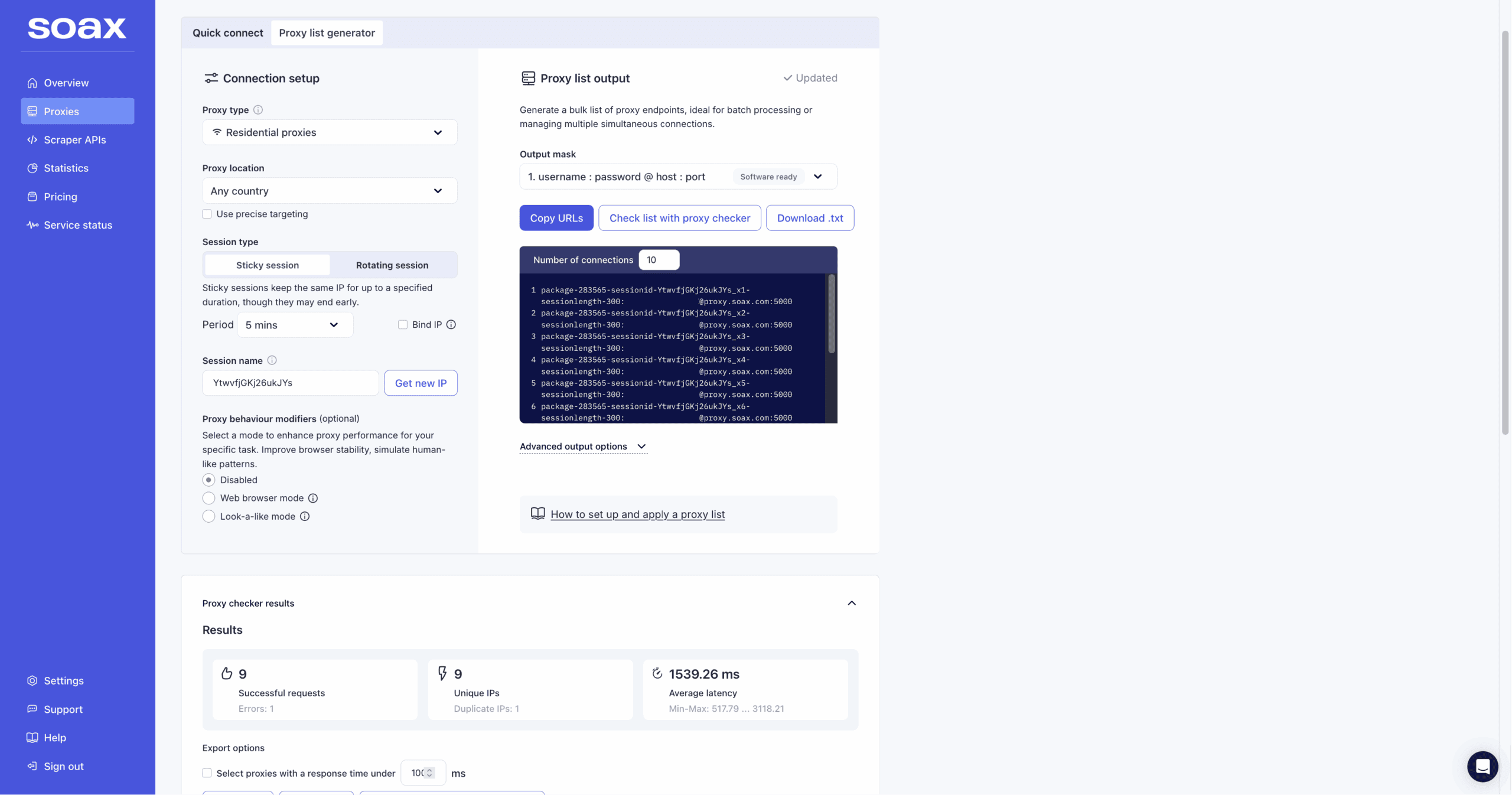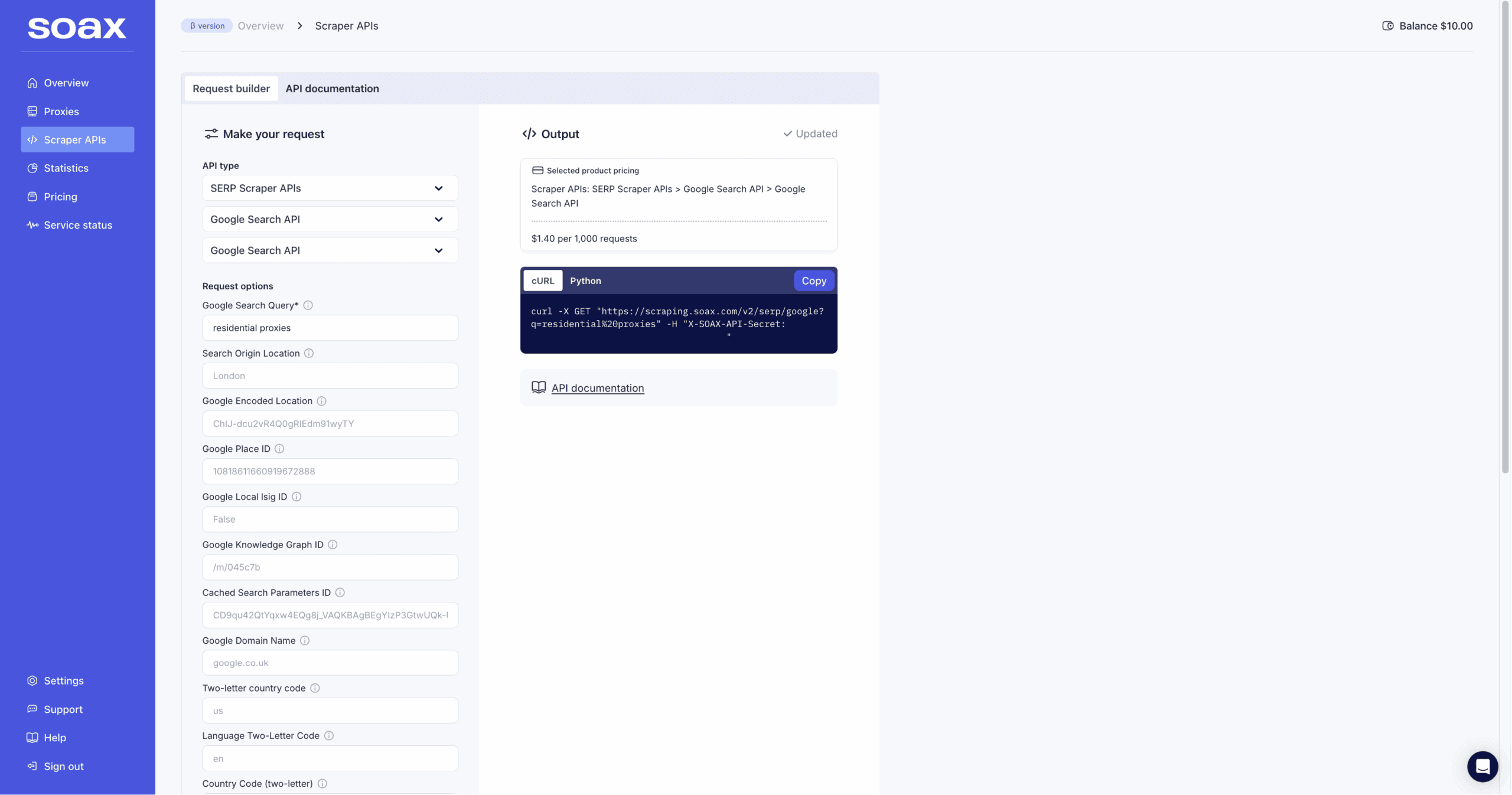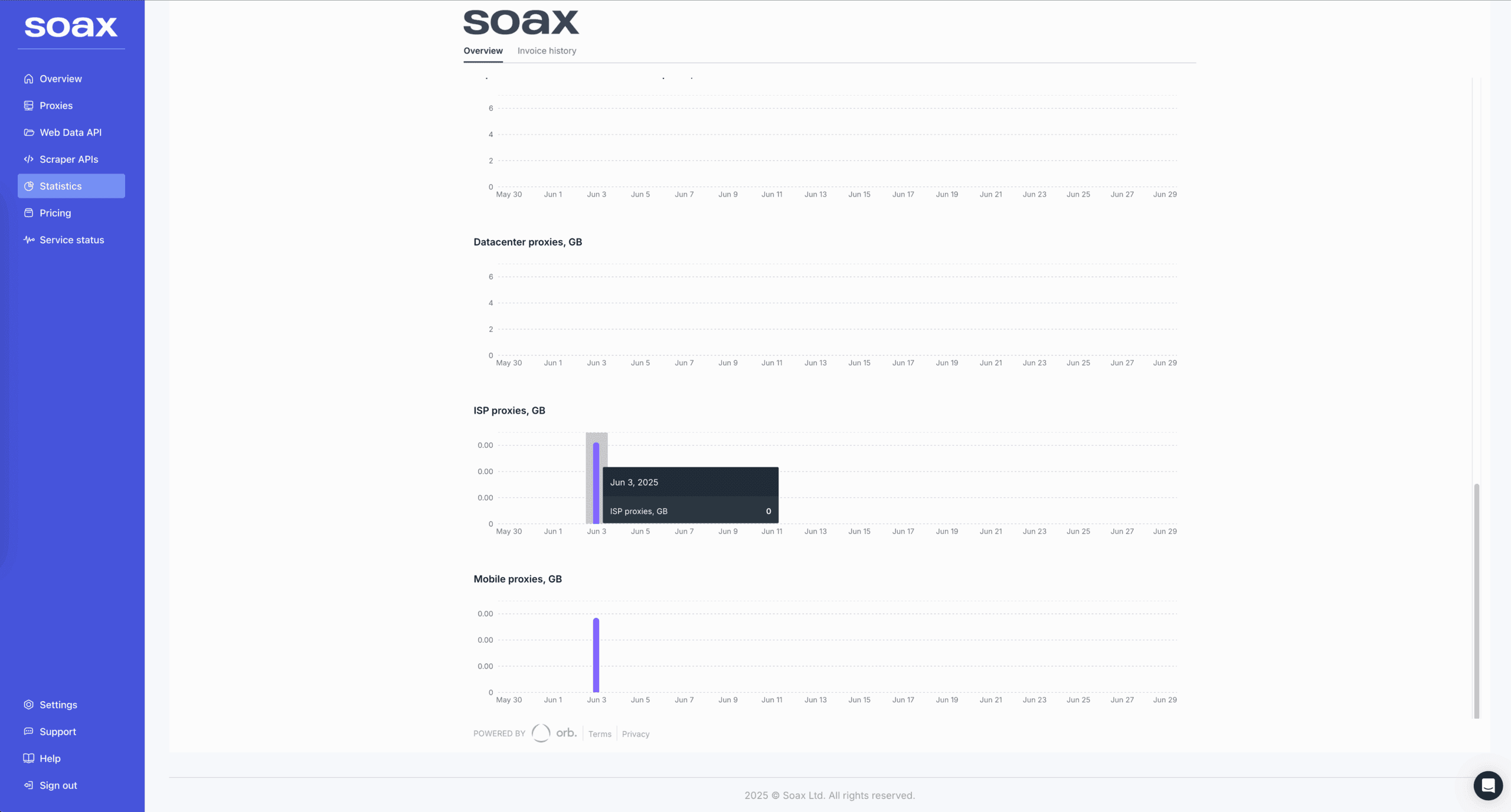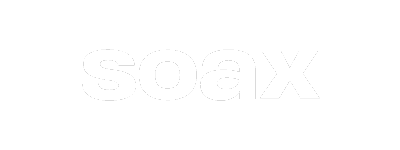
SOAX Review
With pricing plans that unlock all products, advanced proxy filters, and modern protocol support, SOAX’s platform puts you in control.
Use the code PROXYWAY35% to get a 35% discount.
I remember first testing SOAX in 2021. Still a rookie provider, it already looked promising: the proxies rarely failed, offered city & ASN targeting out of the box, and had decent management tools. Though painfully slow and still unfinished, the overall service was surprisingly good.
SOAX is all grown up now. It’s become our Contender of the Year several times, most recently in 2025, proving that it can compete with major players like Smartproxy or Bright Data.
Lately, SOAX has been going through changes. Most notably, it introduced platform-based pricing that enables all products with one subscription. There’s also a new dashboard to play around with.
We’re going to explore these features and see how the company performs compared to the broader market. Let’s go!
News about SOAX
-
By Adam Dubois
- Provider News
-
By Adam Dubois
- Provider News
-
By Adam Dubois
- Provider News
General Information
- Country: UK
- Founded: 2020
- Employees (LinkedIn): 50-100
- Proxy networks: Datacenter, ISP, residential, mobile
- Web scrapers: General purpose, SERP, e-commerce APIs
- Supporting tools: Proxy checker
- Price segment: Mid-market
- Starting price: $4 (all products)
- Payment methods: Credit card, PayPal, cryptocurrencies
- Trial: $1.99 to access all products
SOAX is a UK-registered company run by an international staff. Alongside proxy networks, the provider also sells web scraping APIs for various website groups and a no-code AI scraper.
SOAX started off as a mid-range provider, positioning itself in-between penny-pinching services with limited features like PacketStream and enterprise-facing behemoths, such as Bright Data or Oxylabs. After a foray into the premium territory, it’s returned to its original hunting grounds.
SOAX doesn’t disclose any concrete sources for its proxies, which is concerning. But we do know that it offers an SDK for developers to monetize their apps, such as free VPNs. The provider also supplies several bigger white labels with proxy servers.
Otherwise, SOAX conveys the impression of a solid company. It has ethical guidelines, partners up with The World Ethical Data Forum, and is striving for ISO and SOC certifications. (You can read or watch our interview on ethics with Stepan, SOAX’s CEO.) You can find its reviews on most review platforms like TrustPilot, G2, or Capterra, and employees on LinkedIn.
For a while, it looked like SOAX had gotten into a lull. But in the first half of 2025, the company made notable infrastructure improvements and announced acquisitions of two smaller proxy providers, ProxyWow and Rampage Proxies.
SOAX Proxy Networks
SOAX offers all main types of proxy servers:
- Residential proxies covering all countries in the world.
- Mobile proxies that come from real user devices.
- Datacenter proxies sold as a rotating pool.
- ISP proxies from the US that also come in the pool format.
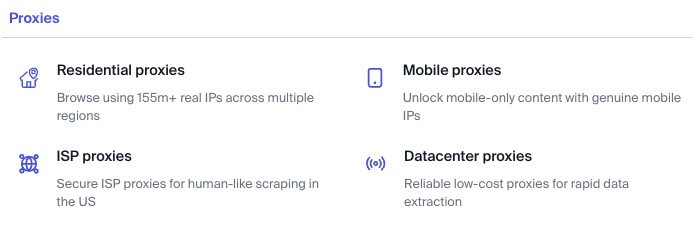
We cover the following products. You can learn more about them by expanding the drop-downs:
Residential
Residential proxies are SOAX’s flagship product.
🌎 Pool Size & Coverage
- Advertised proxy pool: 155 million
- Locations: 195+ countries
- Filtering: Random, country, state, city, ASN
- Non-location filters: More unique IPs, more stable IPs, more predictable rotation
SOAX’s advertised pool consists of around 155 million addresses. We have no idea how the provider came up with this number, but it sounds way too big to be true.
You might have trouble reaching remoter African locations, but the network has grown strong enough to provide an acceptable number of IPs nearly everywhere.
SOAX includes precise filtering options, which you can freely combine (for example, city and ASN). Location aside, there are other pool filters, too:
- Browsing optimizer increases session stability by minimizing unnecessary IP switching.
- Max IPs reduces IP reuse and increases the pool size by including short-lived proxies.
- Lookalike rotation mimics realistic switching by selecting a similar IP, jumping from WiFi to mobile, and so on.
Our benchmark (April 2025)
| Gateway | Requests | Unique IPs | Residential %* |
| Global | 1.2M over 21 days | 752,416 | 97.04% |
| US | 560k over 14 days | 340,126 | 99.07% |
| UK | 560k over 14 days | 158,823 | 99.04% |
| EU | 1.2M over 14 days | 413,375 | 98.99% |
| Brazil | 560k over 14 days | 163,142 | 96.42% |
| India | 560k over 14 days | 137,547 | 96.14% |
| Australia | 140k over 7 days | 27,959 | 98.68% |
* IP2Location database, Usage type data point (ISP, ISP/MOB, MOB IPs)
Comparison with other providers
We found SOAX’s residential proxy pool to be average in size. These days average means hundreds of thousands of IPs in desirable locations, so we have little to complain about. However, the pool is way smaller than the advertised numbers suggest.
📋 Features
- Connection method: Gateway address
- Rotation: Every request, 1-60 min, custom
- Protocols: HTTP, HTTPS, SOCKS5 (with UDP)
- Concurrency: Unlimited
- Traffic: Plan based
- Authentication: Credentials
SOAX uses geographically distributed gateway servers to route your requests to proxies. This is done automatically on the provider’s end.
You can choose from multiple rotation options: every connection request, intervals from one to 60 minutes, or a custom duration. SOAX lets you bind an IP to a session and keep it for the full duration, even if the source device goes offline. In any case, a session expires after 60 seconds of inactivity.
SOAX is also one of the few providers to offer full SOCKS5 support, including the UDP protocol. Of course, most ports will be closed for security purposes.
SOAX’s new dashboard supports only username:password authentication for now. The old dashboard was more flexible, as you could whitelist an IP and generate ports with different parameters.
⚙️ Integration Examples
- Basic request: package-ID:[email protected]:5000
- Using filters: package-ID-country-us-region-california-city-los+angeles-isp-at&t+internet:[email protected]:5000
- Using sessions: package-ID-sessionid-ID-sessionlength-TIME:[email protected]:5000
Once you buy a package, SOAX assigns it an ID, and this becomes the proxy user. To specify locations or create a session, you just append parameters to the username. The gateway address and port never change, even when you connect through different protocols like HTTPS or SOCKS5.
💵 Pricing Plans
- Model: PAYG, subscription (monthly plans)
- Format: Traffic
- Modifiers: –
- Starting price: $4 for 1 GB
- Trial: 3 days & 400 MB for $1.99
SOAX offers monthly plans based on traffic, starting from $90. For this price, you get 25 GB of data ($3.6/GB) at your disposal.
There’s also an option to pay as you go if your traffic needs are inconsistent. Any traffic bought this way lasts 12 months.
The largest plan on display offers 800 GB of data at $2/GB. This isn’t enough for large-scale customers, but at this point they’re likely to strike a custom deal.
Aside from the public price, you can get small upgrades that are hard to notice until you look, such as more whitelisted IPs. However, foregoing them doesn’t impact the service in any meaningful way.
Standardized pricing comparison
To put things into context, SOAX costs less than the big fish like Bright Data and even some mid-market providers. In short, the rates are attractive for what you get throughout the whole range.
📊 Performance Benchmarks
We last tested SOAX’s residential proxies in April 2025, for the annual Proxy Market Research.
Infrastructure performance (April 2025)
Requests: Same as the pool test
Target: Nearest server of a global CDN (~6 KB response size)
| Gateway | Our server location | Avg. success rate | Avg. response time |
| Global | DE | 99.73% | 0.90 s |
| US | US | 98.25% | 0.55 s |
| UK | DE | 99.79% | 0.48 s |
| EU | DE | 99.78% | 0.49 s |
| Brazil | US | 98.26% | 0.89 s |
| India | SG | 99.52% | 2.14 s |
| Australia | SG | 99.77% | 2.30 s |
Comparison with other providers
SOAX infrastructure performed really well in most locales. It was extremely fast in the US – in fact, the fastest out of all our tested providers. We benchmarked SOAX just after it had launched a gateway server in the US, which explains the lower success rate.
However, SOAX evidently has little infrastructure in Asia-Pacific, as its response time there lagged behind most competitors.
Response time with a 2 MB page
Requests: 15,000 with the Global gateway, 5,000 with the US gateway
Target: Nearest server of a global CDN
| Gateway | Our server location | Avg. response time |
| Global | DE | 5.05 s |
| US | US | 5.12 s |
Comparison with other providers
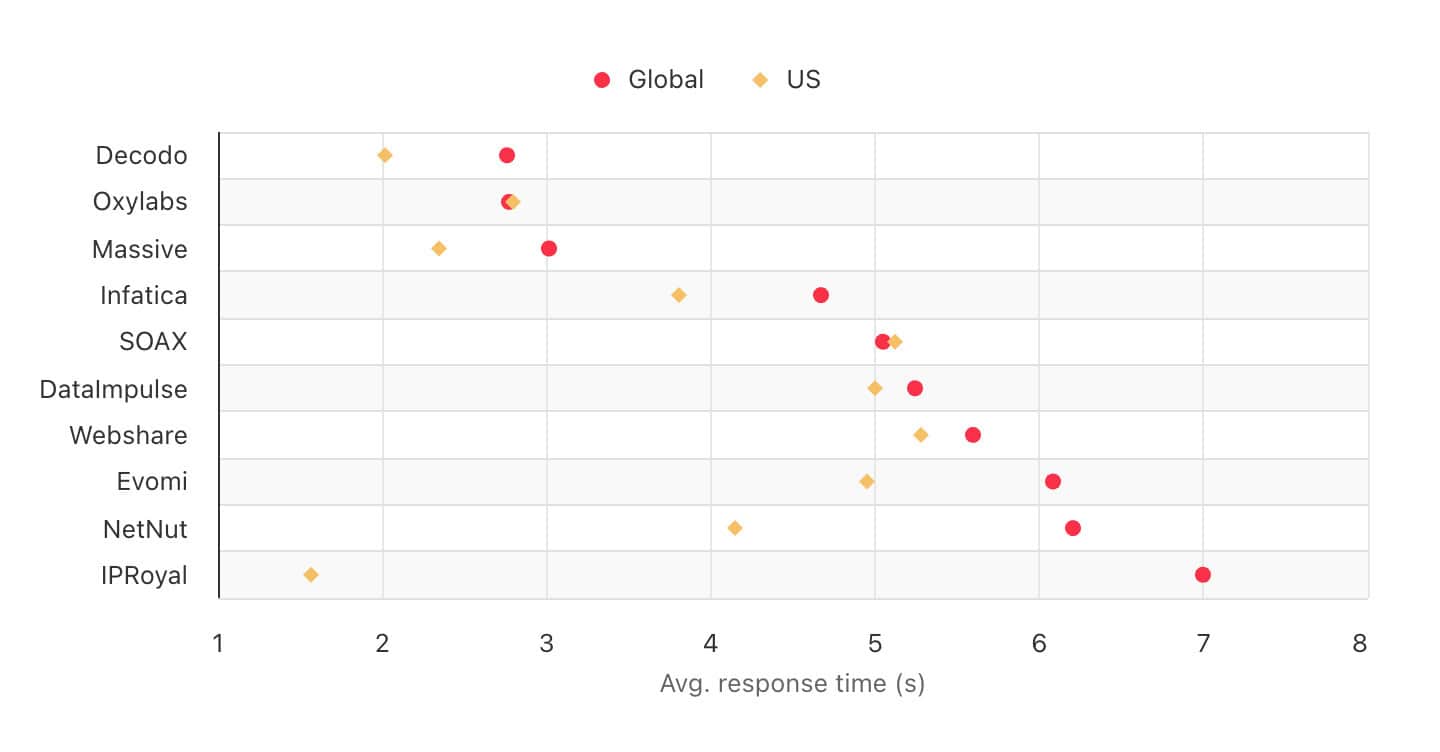
SOAX’s fast response time didn’t translate well to larger pages – when downloading 2 MB of content, the provider found itself in the middle of the pack.
Performance with popular targets
Requests: ~2,600 per target
Location: US (both the gateway and our server)
| Avg. success rate | Avg. response time | |
| Amazon | 94.50% | 4.55 s |
| 81.50% | 3.64 s | |
| 94.80% | 8.35 s | |
| Total | 90.27% | 5.52 s |
Comparison with other providers

When we tried opening popular websites which actually block proxies, SOAX did well with two out of the three targets. Every fifth request to Google failed, which reduced the overall success rate.
Mobile
Mobile proxies are SOAX’s service for targets that regular residential IPs can’t crack. It’s one of the few peer-to-peer-based mobile proxy networks in the market.
🌎 Pool Size & Coverage
- Advertised proxy pool: 33 million
- Locations: 195+ countries
- Filtering: Random, country, state, city, ASN
SOAX claims to control around 33 million IPs – as with the residential proxy network, you shouldn’t expect to get this many during daily (or even monthly) use.
The mobile proxies support precise filtering options and combinations, such as city + ASN.
Our benchmark (April 2025)
| Gateway | Requests | Unique IPs | Mobile %* |
| Global | 280k over 14 days | 165,038 | 94.14% |
| US | 280k over 14 days | 66,197 | 97.27% |
| UK | 280k over 14 days | 15,231 | 99.11% |
| EU | 280k over 14 days | 62,766 | 92.77% |
| Brazil | 280k over 14 days | 4,881 | 98.87% |
| India | 280k over 14 days | 178,627 | 99.96% |
| Australia | 140k over 7 days | 3,579 | 99.13% |
* Mobile percentage: IP2Location database, Usage type data point ( ISP/MOB, MOB IPs)
Our tests found SOAX’s pool to be decently large in most locales. It’s a strong choice if you need proxies in the US or India – less so when it comes to the UK and especially Brazil.
📋 Features
- Connection method: Gateway address
- Rotation: Every request, 1-60 min, custom
- Protocols: HTTP, HTTPS, SOCKS5 (with UDP)
- Concurrency: Unlimited
- Traffic: Plan based
- Authentication: Credentials
SOAX uses gateway servers to connect you to end user devices. They’re located in multiple countries around the world to optimize connection speed and chosen automatically.
SOAX offers multiple rotation options: every connection request, between one and 60 minutes, or a custom duration. SOAX lets you bind an IP to keep it for the full session duration, even if the source device goes offline. In any case, a session expires after 60 seconds of inactivity.
SOAX’s mobile proxy network supports SOCKS5 with the UDP protocol. By default, most ports will be closed for security purposes.
If your account gets assigned to SOAX’s new dashboard, only username and password authentication is available for now. This is a regression compared to the old dashboard, which also had IP whitelisting; but it’s likely temporary.
⚙️ Integration Examples
- Basic request: package-ID:[email protected]:5000
- Using filters: package-ID-country-us:[email protected]:5000
- Using sessions: package-ID-sessionid-ID-sessionlength-TIME:[email protected]:5000
The mobile proxy network uses the same system as SOAX’s residential proxies: you modify the username to add filters or create sticky sessions. The gateway address and port remain the same, even when you use different connection protocols.
💵 Pricing Plans
- Model: PAYG, subscription
- Format: Traffic
- Starting price: $4 for 1 GB ($4/GB)
- Trial: 3 days & 100 MB for $1.99
SOAX’s mobile profiles run on a subscription model that automatically renews every month until you cancel it. Starting with March 2025, you can also use the network without time commitments.
The cheapest mobile plan costs $90, or the same amount as access to SOAX’s residential proxies. Amazingly, the rates are also identical, making SOAX a great deal. Currently, these are some of the cheapest premium-level mobile proxies on the market.
📊 Performance Benchmarks
Infrastructure performance (April 2025)
Target: Nearest server of a global CDN (~6 KB page size)
Our server locations: DE for Global & European pools, US for American & Brazil pools, Singapore for Indian & Australian pools
| Gateway | Requests | Avg. success rate | Avg. response time |
| Global | 280k over 14 days | 99.61% | 1.39 s |
| US | 280k over 14 days | 99.79% | 0.76 s |
| UK | 280k over 14 days | 99.69% | 0.74 s |
| EU | 280k over 14 days | 99.31% | 0.82 s |
| Brazil | 280k over 14 days | 95.66% | 1.31 s |
| India | 280k over 14 days | 99.38% | 2.82 s |
| Australia | 140k over 7 days | 99.62% | 2.52 s |
We found SOAX’s mobile infrastructure very stable, with success rates around 99.5%. The only exception was Brazil. When we tested this pool, SOAX had just launched a new gateway server, so this may explain the degradation in performance.
SOAX’s response time was fast in Americas and Europe, but it lagged behind in Asia-Pacific.
How to Use SOAX
Registration
To register with SOAX, you have to enter your full name and email address, then confirm the registration via an email. Alternatively, it’s possible to sign up with a Google account.
Further sign-ins will only need an email address, but you’ll have to enter a six-digit number that SOAX sends over email.
KYC and Usage Policies
SOAX has an optional identity verification procedure. You have to undergo it when paying with crypto or accessing restricted ports and domains. Some examples would be financial or governmental websites, mailing ports like 25.
The KYC procedure uses Sumsub; it requires a photo ID, proof of residence, and camera access.
Dashboard
SOAX’s new dashbboard is still in beta, but the provider is already moving customers to it. We don’t know which one you’ll end up in, so we’ll cover both.
SOAX’s old dashboard is an elegant control panel that evidently received a lot of love from the creators. The dashboard covers all the basics one could expect: you can authenticate, set up a proxy server, buy a plan, read the help docs, and get support.
We especially liked the Online Check tab. It shows not only now many ASNs are online in each country but also their connection status. That’s not something we encounter often.
Another thing we need to emphasize is how attentive SOAX is to new users. Multiple tabs in the dashboard have interactive onboarding wizards that guide you through the hoops of getting accustomed with the service. The Intercom-based chat also attempts to settle you in via a drip message campaign, though we’re not sure if we like this part. Flashbacks to misuse from other websites.
Subscription Management
SOAX offers self-service for its proxy networks – it’s possible to buy a plan by yourself. This doesn’t apply to cryptocurrency payments, which require contacting support.
SOAX’s dashboard includes wallet functionality, so you can top up the account in advance to prevent charging your card multiple times. This is useful when you want to top up your traffic without getting a new plan. Just be aware that this process is manual, so your access can still be suspended if you’re not careful.
The dashboard has a separate tab for viewing your balance, transaction history, and downloading invoices.
Proxy Management
The proxy setup ritual here is pretty elaborate. Even though you can authorize using a username and password, you’ll still have to whitelist an IP address first. Team SOAX argue that this is to protect themselves and their users. We argue that they don’t like resellers. In any case, keep this in mind, even if SOAX mentions a workaround for people with dynamic IPs.
After whitelisting an IP address, you can set up a proxy server. There are two ways to do so: via the Login & Password flow or the IP Whitelist flow. In any case, you’ll have to choose a rotation time, specify the location and/or ISP, and then map them to the ports you have.
For example, with an allowance of 100 ports, we assigned ports 10060-10070 to Spain and 10040-10049 to the UK. Note that IP address settings override Login & Password, and the provider advises against using both at once.
You can also create a list of proxies and export it into a text file.
Usage Tracking
One aspect that could be improved is visualization of data use. The provided graph is small and stingy. You can see how much traffic you’ve expended over a given period, but that’s pretty much it. SOAX could learn a thing or two in this regard, even if there’s no need to go all out like providers such as NetNut have.

Compared to the old dashboard’s, the new iteration includes useful features like platform-wide pricing plans and a unified proxy setup widget. Overall, it feels like a more streamlined experience.
However, SOAX hasn’t ported over all the features yet: in June 2025, the dashboard lacked IP whitelisting, ability to enter company information, had credit card as the only payment method, and included very bare-bones usage stats.
Subscription Management
The differentiating feature of this dashboard compared to the old one – and most proxy providers in general – is SOAX’s unified pricing approach. Instead of buying one product, you subscribe to a plan and get access to the full product range. This includes both proxies and APIs.
SOAX has a dashboard wallet – you deposit money there, and it gets deducted to cover the plan’s amount. Traffic and requests are converted to balance; so if you run out, you can top up manually or set up automated top-ups at your chosen threshold.
The dashboard stores all invoices, which you can share with others by generating a link.
Access Management
SOAX has neither team roles, nor sub-users. Your username gets generated automatically based on the package ID, and it’s currently impossible to create a custom password. This makes teamwork complicated.
There’s one setup widget for all proxy networks. It lets you specify filters, session parameters, and then generates integration examples in multiple formats, for example, as a cURL request. In the same way, you can generate a proxy list with up to 1,000 unique IPs at once.
One useful feature is that the widget integrates a proxy checker. It’s even more cool that you can check whole proxy lists at once, exporting only the working ones or those that connected under your chosen time threshold.
SOAX’s scraping APIs have their own playground. It lets you easily generate an API request for cURL or Python. However, when we last used it, there was no way to actually run a request from the playground, which is a standard feature for this type of tool.
Usage Tracking
The usage tracking options in the new dashboard are severely limited. You can only view your daily traffic or request expenditure in a graph – there’s no way to specify a time period or even choose any other measure than gigabytes for the proxy networks. There’s much, much to be improved here.
On the brighter side, the dashboard now links to a network status page that shows the uptime of SOAX’s infrastructure.
API Access
SOAX offers a reporting API. Its main functions are limited to fetching lists of locations and ISPs. So, don’t expect too much from it.
Documentation
SOAX has a help center covering various aspects of its service. It includes:
- an FAQ,
- quick-start guide,
- proxy setup instructions,
- billing information,
- API documentation,
- integration tutorials, and
- video guides.
The help center is pretty comprehensive: there are around 40 different integration guides, some of which provide instructions for multiple tools.
However, we found its hierarchy confusing and unable to surface all the necessary information. Competitors like Oxylabs, Bright Data, or IPRoyal have all done better in this regard.
The strength of SOAX’s approach is that it integrates with the live chat very well. The system can point you to a relevant article or even embed it in the chat window.
Hands-On Support
You can contact SOAX’s support via live chat, email, phone, or Telegram. The provider also specifies tickets in the SLA but selecting the Support tab in the dashboard simply activates the live chat.
It’s mid-2025, so the live chat naturally includes a chat bot. It leads you through a maze of categories and hopefully teaches what you wanted to learn in the process. Having said that, it’s easy to summon a human if needed.
We did this multiple times using the live chat functionality. Replies came quickly (one exception aside, within five minutes) and managed to answer our questions. All in all, SOAX’s support left us with a positive impression, at least during daytime in Europe.
Conclusion
SOAX is a major proxy provider and a strong competitor to most mid-range and premium services. While not without flaws, it keeps the qualities that made it special, while significantly improving on the weaknesses.
At this point, SOAX is a well-rounded option for anyone that needs residential or mobile proxies. However, it’s undergoing a transition, so you may encounter some rough edges or missing features for a while.
SOAX Alternatives

Smartproxy is the first place to go if SOAX is not an option for you. It offers similar performance, great user experience, proxy-based tools and more features.
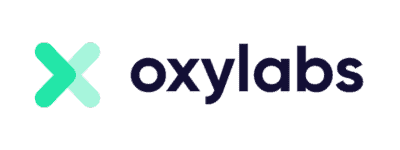
Oxylabs is like a premium version of SOAX. It controls a significantly larger IP pool, and you can get specialized APIs that simplify web scraping.
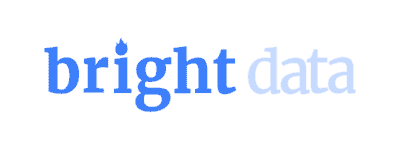
Bright Data is one of the biggest player in the premium space. It offers more features, some powerful proxy management tools, and complete pre-scraped data sets.
Recommended for:
Anyone who needs precise location and session control.
Use the code PROXYWAY35% to get 35% off.
